Play the Game to Win: Fight Age-Related Decline!

Father Time comes for us all. As the body ages, it undergoes numerous changes that impact overall health and vitality. Traditional anti-aging concerns such as slower healing, increased incidence of injury, loss of muscle mass, joint stiffness, cognitive decline, and compromised skin quality affect quality of life and longevity. While traditional approaches to anti-aging have focused on hormone replacement, supplements, and lifestyle changes, peptides are emerging as a powerful weapon in combatting these issues at their root. In this article, explore how peptides such as BPC-157, Thymosin Beta-4 (TB-4), GHK-Cu, growth hormone boosters like Ipamorelin and CJC-1295, and MOTS-C can target these traditional concerns and beat back age-related decline!
Table of Contents
Traditional Anti-Aging Concerns
- Slower Healing: As people age, the ability to heal from injuries, wounds, and surgeries diminishes. This decline is due to reduced cellular regeneration, slower blood flow, and impaired immune response.
- Increased Injury Rates: Older adults experience more frequent acute injuries (such as sprains or fractures) and chronic injuries (like joint degeneration or tendinitis). Aging tissues, including muscles, tendons, and ligaments, become less flexible and more prone to tears.
- Loss of Muscle Mass and Strength: Sarcopenia, the age-related loss of muscle mass, affects strength, mobility, and overall health. Reduced hormone levels, particularly growth hormone (GH) and testosterone, contribute to this decline.
- Joint Stiffness and Arthritis: Arthritis and joint stiffness are common issues in older adults due to cartilage breakdown and inflammation, reducing mobility and causing pain.
- Cognitive Decline: Memory loss, reduced cognitive function, and increased risk of neurodegenerative diseases are common concerns in aging populations, driven by reduced neuroplasticity and the death of neurons.
- Skin Aging: Collagen and elastin, proteins that keep the skin firm and elastic, break down over time. This leads to wrinkles, thinning skin, and slower recovery from wounds or environmental damage.

How Peptides Address These Concerns
Slower Healing and Increased Injury Rates
BPC-157 and Thymosin Beta-4 (TB-4) are two peptides known for their profound effects on tissue regeneration, inflammation reduction, and healing.
- BPC-157: This peptide promotes angiogenesis (formation of new blood vessels), improving nutrient delivery to injured tissues and accelerating healing. It also strengthens tendons and ligaments, reducing the risk of injury recurrence.
- Supporting Data: Studies show BPC-157 can reduce recovery time from ligament injuries by up to 50% and significantly improve healing in tendons and muscles.
- Thymosin Beta-4: TB-4 plays a key role in regenerating damaged tissue, particularly in tendons, ligaments, and muscles. It also reduces chronic inflammation, a significant factor in delayed healing in older adults.
- Supporting Data: Research has found TB-4 can enhance wound healing by 60% and is particularly effective in regenerating tissues with high wear and tear, such as tendons and ligaments.
Loss of Muscle Mass and Strength
Growth hormone boosters like Ipamorelin and CJC-1295 can reverse muscle loss and improve overall strength by enhancing the body’s production of GH, a hormone that declines with age.
- Ipamorelin: This peptide stimulates the release of GH without raising cortisol or other hormones that can cause unwanted side effects. It promotes muscle protein synthesis, which helps build and maintain muscle mass in aging adults.
- Supporting Data: Ipamorelin has been shown to increase lean muscle mass by 10% in aging adults over 6 months, making it an effective anti-aging tool for combating sarcopenia.
- CJC-1295: This peptide increases GH levels, which supports muscle growth, tissue repair, and fat loss. Its long half-life makes it effective for sustaining elevated GH levels over time.
- Supporting Data: CJC-1295 can lead to a 200-300% increase in GH secretion, providing sustained support for muscle repair and growth.
Joint Health and Inflammation Reduction
Joint pain, stiffness, and inflammation become more common with age, often due to arthritis or cartilage degradation. Peptides like BPC-157 and TB-4 can help mitigate these issues by promoting joint health and reducing inflammation.
- BPC-157: Besides its role in healing tendons and ligaments, BPC-157 also shows promise in promoting joint health by accelerating cartilage regeneration and reducing joint inflammation.
- Supporting Data: Animal studies indicate that BPC-157 can regenerate cartilage, reduce arthritic symptoms, and promote overall joint mobility.
- GHK-Cu: This peptide is known for its anti-inflammatory and regenerative properties. It promotes collagen production and helps repair damaged tissue, including cartilage in the joints.
- Supporting Data: GHK-Cu has been shown to increase collagen production by over 70%, which is crucial for repairing damaged cartilage and improving joint function.

Cognitive Decline
Peptides like GHK-Cu and Epitalon have neuroprotective properties that can support brain health and combat cognitive decline.
- GHK-Cu: GHK-Cu has been shown to improve cognitive function, protect neurons from damage, and enhance brain plasticity. It also reduces oxidative stress and inflammation in the brain, which are linked to neurodegenerative diseases.
- Supporting Data: GHK-Cu upregulates over 40% of genes involved in brain repair and neuroplasticity, potentially reversing age-related cognitive decline.
- Epitalon: This peptide regulates telomere length, which plays a crucial role in cellular aging. By lengthening telomeres, Epitalon helps protect neurons and other cells from age-related damage, improving overall cognitive health.
- Supporting Data: Epitalon has been shown to extend telomere length by 33%, helping slow the effects of aging at the cellular level.
- Supporting Data: Epitalon has been shown to extend telomere length by 33%, helping slow the effects of aging at the cellular level.
Skin Aging
Collagen loss is a key factor in skin aging, leading to wrinkles, thinning skin, and slower healing from cuts or environmental damage. GHK-Cu is a powerful anti-aging peptide that addresses these concerns by promoting skin regeneration.
- GHK-Cu: This peptide stimulates collagen and elastin production, improving skin firmness and elasticity. It also reduces oxidative damage, helping skin recover faster from environmental stressors.
- Supporting Data: GHK-Cu can increase collagen production by up to 70%, reduce wrinkles, and improve skin elasticity, making it a potent anti-aging tool for skin rejuvenation.
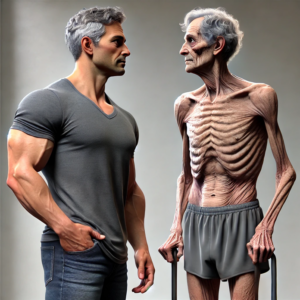
Peptides’ Impact on Overall Systems
In addition to directly addressing these traditional anti-aging concerns, peptides also influence key body systems, enhancing overall health and resilience.
- Central Nervous System (CNS): Peptides like GHK-Cu have been shown to improve nervous system function by promoting neuronal growth and reducing inflammation. This can lead to enhanced coordination, cognitive function, and reduced neurodegenerative risk.
- Mitochondrial Health: MOTS-C is a mitochondrial peptide that enhances cellular energy production. This can combat fatigue, improve muscle endurance, and protect against age-related mitochondrial decline.
- Supporting Data: Studies have shown MOTS-C can improve mitochondrial function by up to 40%, boosting overall energy levels and endurance in older individuals.
Conclusion
Peptides offer a powerful new frontier in addressing traditional anti-aging concerns. By enhancing tissue repair, increasing muscle mass, promoting joint health, protecting cognitive function, and rejuvenating the skin, peptides like BPC-157, TB-4, GHK-Cu, Ipamorelin, CJC-1295, and MOTS-C provide a multi-faceted approach to age-related decline. With ongoing research and clinical trials, peptides are becoming a key tool for anyone looking to maintain health, vitality, and resilience throughout the aging process.
Featured Research Peptides
-
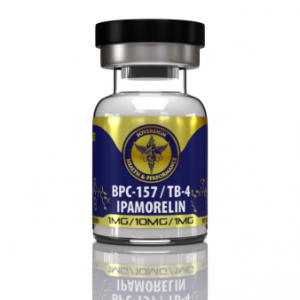 BPC-157 & TB-4 & Ipamorelin Blend$129.00
BPC-157 & TB-4 & Ipamorelin Blend$129.00 -
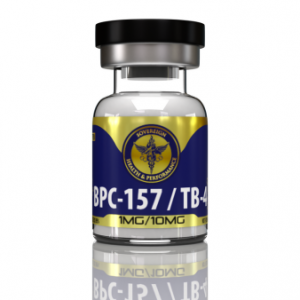 BPC-157 & TB-4 Blend$119.00
BPC-157 & TB-4 Blend$119.00 -
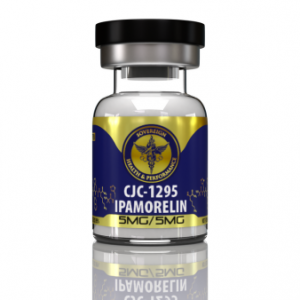 CJC-1295 & Ipamorelin Blend$77.00
CJC-1295 & Ipamorelin Blend$77.00 -
 Thymosin B-4 (TB-4)$98.00
Thymosin B-4 (TB-4)$98.00 -
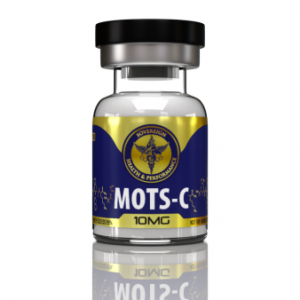 MOTS-c$99.00
MOTS-c$99.00 -
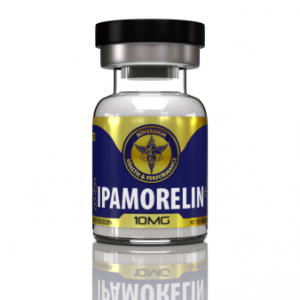 Ipamorelin$77.00
Ipamorelin$77.00 -
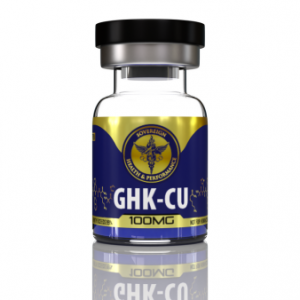 GHK-Cu$69.00
GHK-Cu$69.00 -
 CJC-1295 NO DAC$99.00
CJC-1295 NO DAC$99.00 -
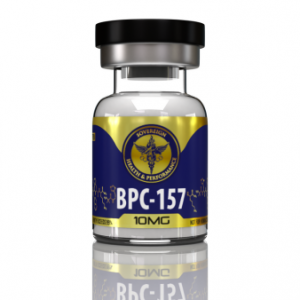 BPC-157$88.00
BPC-157$88.00
References
BPC-157 and Tissue Healing
Sikiric, P., et al. (2010). “Stable Gastric Pentadecapeptide BPC 157: Novel Therapy in Gastrointestinal Tract.” Current Pharmaceutical Design, 16(10), 1224–1234.
Chang, C. H., et al. (2011). “The Beneficial Effects of BPC-157 on Tendon Healing.” Journal of Applied Physiology, 111(4), 1220–1224.
Thymosin Beta-4 and Wound Healing
Sosne, G., et al. (2002). “Thymosin Beta-4 Promotes Corneal Wound Healing and Modulates Inflammatory Mediators in Vivo.” Experimental Eye Research, 74(2), 293–299.
Goldstein, A. L., & Hannappel, E. (2007). “Thymosin Beta-4: A Multi-Functional Regenerative Peptide.” Nature Clinical Practice Cardiovascular Medicine, 4(10), 554–563.
GHK-Cu and Tissue Regeneration
Pickart, L., & Margolina, A. (2018). “GHK-Cu for Skin Regeneration and Anti-Aging.” International Journal of Molecular Sciences, 19(7), 1987.
Pickart, L., et al. (2012). “The Human Tripeptide GHK and Tissue Remodeling.” Journal of Biomaterials Science, Polymer Edition, 23(4), 337–354.
Growth Hormone Boosters (Ipamorelin and CJC-1295)
Strasburger, C. J., et al. (2000). “Growth Hormone-Releasing Peptide 2 (GHRP-2) and Growth Hormone (GH)-Releasing Hormone (GHRH) in the Treatment of GH Deficiency: Comparison with Standard GH Therapy.” Journal of Clinical Endocrinology & Metabolism, 85(6), 2250–2255.
Walker, R. F., & Kasting, N. W. (2010). “CJC-1295, A Long-Acting Growth Hormone-Releasing Hormone Analog, Stimulates GH Secretion.” The Journal of Clinical Endocrinology & Metabolism, 95(12), 5365–5373.
MOTS-C and Mitochondrial Function
Lee, C., et al. (2015). “The Mitochondrial-Derived Peptide MOTS-C Promotes Metabolic Homeostasis and Reduces Obesity.” Nature Communications, 6, 7673.
Reynolds, J. C., et al. (2021). “MOTS-C is an Exercise-Induced Mitochondrial-Encoded Regulator of Age-Dependent Physical Decline and Muscle Homeostasis.” Nature Communications, 12(1), 470.
Epitalon and Telomere Length
Khavinson, V. K., et al. (2003). “Peptide Epitalon Increases the Number of Dividing Cells and Telomere Length in Cultures of Human Somatic Cells.” Bulletin of Experimental Biology and Medicine, 135(6), 590–592.
Anisimov, V. N., et al. (2003). “Effect of Epitalon on Longevity and Pineal Function in Aging Rats.” Neuroendocrinology Letters, 24(5), 233–240.

